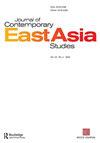Cooperation between China and ASEAN under the building of ASEAN Economic Community
IF 1.4
Q1 AREA STUDIES
引用次数: 14
Abstract
ABSTRACT Since the establishment of China-ASEAN strategic partnership, and the acceleration of the ASEAN Economic Community (AEC) building, China-ASEAN economic cooperation relationship has entered a new era. In the building of the “Belt and Road Initiative” (BRI), ASEAN has a pivotal position and role, and ASEAN countries are key cooperation partners. In order to achieve the building goals of the BRI and AEC, China not only attaches great importance to the cooperative relationship with ASEAN, establishing and upgrading the China-ASEAN Free Trade Area, advocating the establishment of a China-ASEAN community with a shared future, and agrees that ASEAN maintaining its leadership role in East Asia regional cooperation. At the same time, China and ASEAN are gradually implementing the BRI to dock with the ASEAN Community Blueprint and the Master Plan on ASEAN Connectivity, and speeding up cooperation in trade, investment, and production capacity for win-win cooperation. However, China-ASEAN economic cooperation also faces challenges such as trade and investment competition, trade surplus, competition for dominance in economic cooperation, and the “China Threat” theory. In this regard, China and ASEAN need to coordinate the relationship among various cooperation mechanisms, optimize the structure of bilateral economic cooperation, implement a competitive negative list system, adjust the division of labor to achieve complementary advantages, so as to lay a solid foundation for building a China-ASEAN community with a shared future.东盟经济共同体建设下的中国与东盟合作
自中国-东盟建立战略伙伴关系以来,随着东盟经济共同体建设的加快,中国-东盟经济合作关系进入了一个新的时代。在“一带一路”建设中,东盟具有举足轻重的地位和作用,东盟国家是重要合作伙伴。为实现“一带一路”和东盟经济共同体建设目标,中国高度重视发展与东盟的合作关系,推动中国-东盟自贸区建设升级,倡导构建中国-东盟命运共同体,赞同东盟在东亚区域合作中保持领导地位。与此同时,中国和东盟正在逐步落实“一带一路”倡议,与《东盟共同体蓝图》、《东盟互联互通总体规划》对接,加快贸易、投资、产能合作,实现合作共赢。但中国-东盟经济合作也面临着贸易投资竞争、贸易顺差、经济合作主导权竞争、“中国威胁论”等挑战。为此,中国和东盟应协调好各合作机制之间的关系,优化双边经济合作结构,实行竞争性负面清单制度,调整分工,实现优势互补,为构建中国-东盟命运共同体奠定坚实基础。
本文章由计算机程序翻译,如有差异,请以英文原文为准。
求助全文
约1分钟内获得全文
求助全文
来源期刊

Journal of Contemporary East Asia Studies
Social Sciences-Cultural Studies
CiteScore
2.50
自引率
0.00%
发文量
10
审稿时长
6 weeks
 求助内容:
求助内容: 应助结果提醒方式:
应助结果提醒方式:


